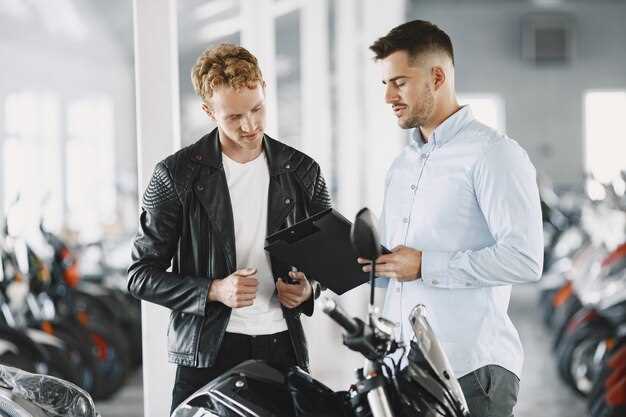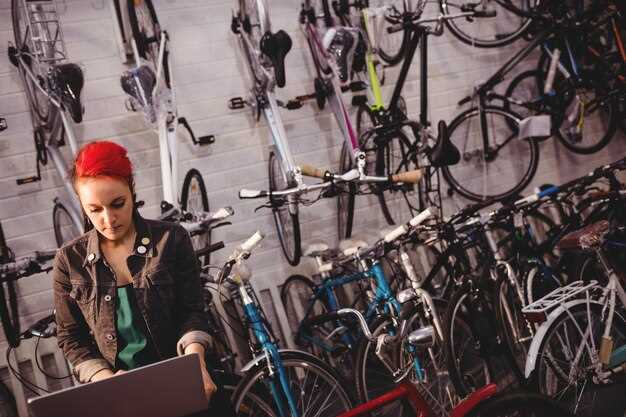
Purchasing a used motorcycle can be an exhilarating experience, but it also comes with its own set of challenges and risks. To ensure that you make a wise investment, it is crucial to carry out a thorough inspection before finalizing your purchase. Knowing what to look for can save you not only money but also potential headaches down the road.
During the inspection, pay close attention to critical areas such as the engine’s condition, the integrity of the frame, and the wear on both tires and brakes. Each of these components can reveal a lot about how well the bike has been maintained and can significantly impact overall performance and safety. Additionally, verifying the bike’s maintenance history and whether it has undergone any major repairs or accidents can provide valuable insights into its reliability.
Ultimately, taking the time to perform these essential checks will enhance your chances of finding a quality used motorcycle that meets your expectations. Equip yourself with the right knowledge and tools, and you’ll be better prepared to make an informed decision in the fast-evolving used bike market.
Evaluating the Motorcycle’s Condition and History

When considering a used motorcycle, a thorough inspection is crucial to ensure you’re making a sound investment. Begin by examining the overall condition of the bike. Look for signs of wear and tear, such as scratches, dents, or rust, particularly on the frame, forks, and fuel tank. Pay attention to the engine and ensure there are no fluid leaks, which could indicate deeper mechanical issues.
Checking the tires is also essential; they should have adequate tread depth and show even wear. Examine the brakes and suspension components for responsiveness and functionality. A used motorcycle should operate smoothly without unusual noises or vibrations during a test ride.
In addition to the physical inspection, it’s important to gather the motorcycle’s history. Request service records, previous ownership details, and any accident reports. This list of information can reveal how well the bike has been maintained and if there have been any significant repairs. A transparent history will give you greater confidence in the motorcycle’s reliability and current condition.
Lastly, consider using a vehicle history report service to check for any past issues that may not be documented by the seller. This additional layer of verification will help ensure you are making an informed decision when purchasing a used motorcycle.
Testing the Bike’s Performance on the Road

When considering the purchase of a used motorcycle, it’s crucial to evaluate its performance on the road. This assessment will help ensure that the bike is not only reliable but also enjoyable to ride. Start by taking the motorcycle for a test ride in various conditions to truly gauge its capabilities.
Create a checklist of aspects to observe during the ride. First, check the engine’s responsiveness when accelerating from a standstill and during cruising speeds. Listen for any unusual noises that might indicate underlying mechanical issues. Smooth acceleration and deceleration are indicators of a well-maintained engine.
Next, assess the handling of the motorcycle. Take sharp turns and navigate through curves to evaluate stability and cornering ability. A used motorcycle should respond predictably and provide confidence while leaning into turns. Pay attention to any wobbling or instability that could signal suspension problems.
Do not overlook the brakes. Test the front and rear brakes separately to determine their effectiveness. A proper functioning braking system should deliver gradual stopping power without any grinding sounds or vibrations. Check for any brake fluid leaks around the calipers and the master cylinder.
Finally, evaluate the clutch and gearbox performance. Smooth gear shifts are essential for a pleasant riding experience. Listen for any grinding sounds when changing gears. If the clutch feels spongy or requires excessive force to engage, it might need adjustment or replacement.
Overall, a thorough road test will provide valuable insight into the condition of a used motorcycle, ensuring you make an informed decision before finalizing your purchase.
Understanding Paperwork and Legal Considerations
When purchasing a used bike, understanding the paperwork and legal aspects is crucial for a smooth transaction. Here are the essential steps to ensure you are legally covered:
- Title Verification: Check if the seller has the title. A clear title proves ownership and is vital for registration. Ensure there are no liens against the bike.
- Bill of Sale: Obtain a written bill of sale that outlines the transaction details, including the bike’s make, model, VIN, sale price, and both parties’ information.
- Inspection Records: Request any maintenance or inspection records available. These documents give insight into the bike’s history and condition, indicating how well it has been cared for.
Make sure to also verify the following:
- VIN (Vehicle Identification Number): Confirm that the VIN on the bike matches the title and any registration documents. This helps in determining if the bike has been reported stolen.
- Registration Status: Check the bike’s registration status with your local DMV. This step can reveal if the bike is legally registered and if there are any outstanding issues.
- Insurance Requirements: Understand the insurance requirements for used bikes in your area. Some places may mandate specific coverage for used vehicles.
Finally, keep a checklist to ensure you cover all bases during the buying process. This list can prevent potential legal issues post-purchase:
- Title status confirmed
- Bill of sale acquired
- Inspection records reviewed
- VIN verification completed
- Registration status checked
- Insurance needs assessed
Taking these steps will help you confidently navigate the legal side of purchasing a used bike, ensuring your investment is both legitimate and secure.
